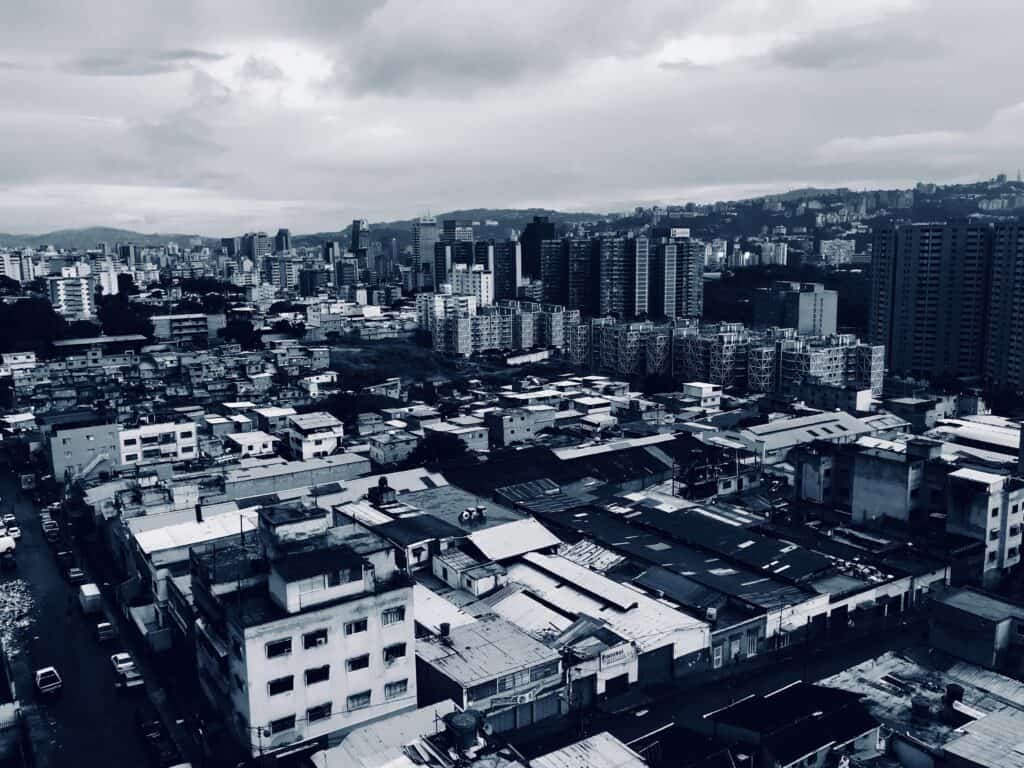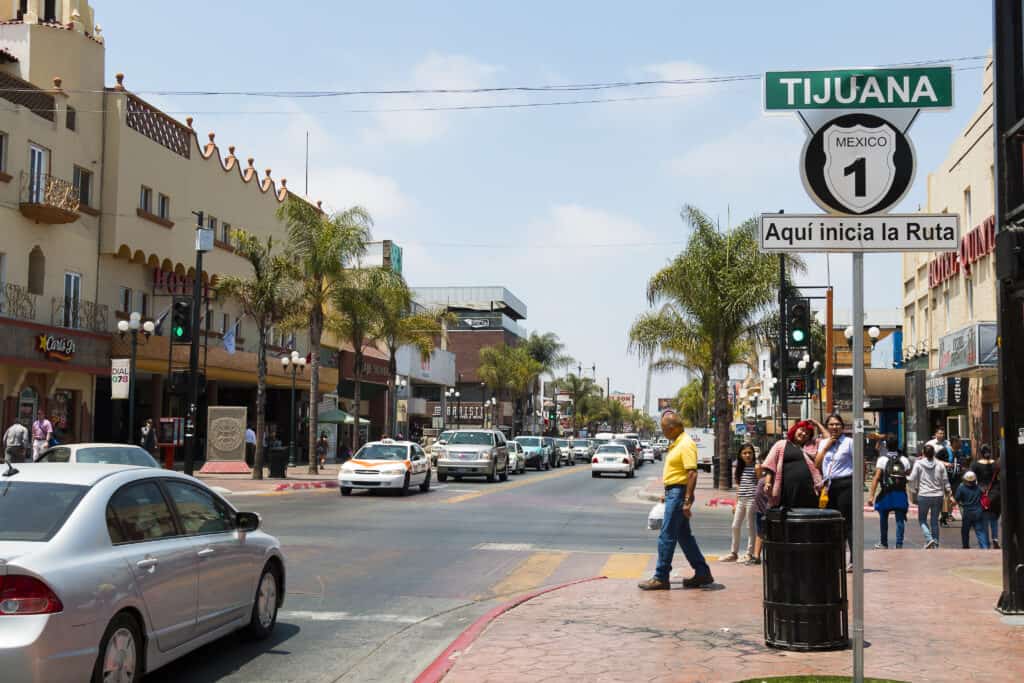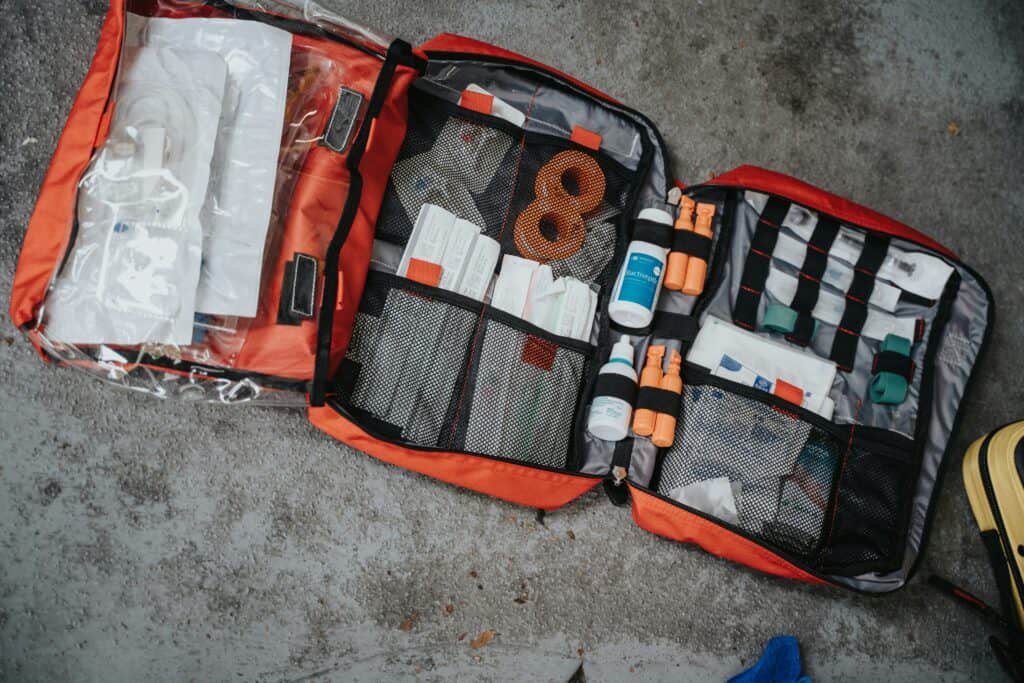Traveling can be an enriching and exciting experience, but venturing into high-risk areas brings a unique set of challenges and potential dangers. In order to ensure a safe and successful trip, it is crucial to be well-prepared and informed about the risks involved in visiting such regions. This comprehensive guide aims to provide valuable insights and effective strategies to navigate these risks, allowing travelers to make informed decisions and have a safer travel experience.
High-risk areas can pose various threats, including but not limited to kidnapping, hostage-taking, theft, and serious injury. As a visitor to any country, it is essential to remember that one is subject to the laws and legal systems of that nation and that assistance from one’s own government may be limited in cases of high-risk travel. Moreover, travelers should be prepared to adapt their behavior and take necessary precautions for their well-being and security.
The following guide is structured to assist travelers in dissecting the complexities of high-risk travel while providing practical advice and in-depth information that will equip them with the knowledge required to minimize potential dangers. By understanding and adequately preparing for these risks, individuals can feel confident that they are making the best possible decisions when embarking on adventures in high-risk areas.
Understanding High-Risk Areas
Defining High-Risk Countries
High-risk areas are regions or countries where travelers may face increased risks such as kidnapping, hostage-taking, theft, and serious injury. These areas often have unstable political situations, ongoing conflicts, or high levels of crime and violence. The U.S. State Department provides travel advisories to help travelers identify and assess the risks associated with visiting these countries.
Common Risks and Challenges
When traveling to high-risk areas, there are several common risks and challenges that travelers may encounter:
- Kidnapping and hostage-taking: Some high-risk areas are known for incidents of kidnapping and hostage-taking. These situations can be life-threatening and may involve prolonged captivity.
- Theft and crime: High levels of crime, including theft and robberies, are common in some high-risk areas. Travelers may be targeted for their belongings or be caught in the crossfire of criminal activity.
- Political instability and conflict: Ongoing conflicts and political instability in high-risk areas can lead to sudden changes in the security situation, posing additional risks for travelers.
- Health risks: Access to quality medical care may be limited in high-risk areas, and travelers may face an increased risk of exposure to infectious diseases. The World Health Organization provides public health considerations to help travelers make informed decisions when considering international travel during the pandemic.
When planning a trip to a high-risk area, it is crucial to stay updated on current events and security advisories, and to take the necessary precautions to ensure safe and smooth travels.
Pre-Travel Preparations
Researching Your Destination
Before embarking on your journey to high-risk areas, it’s crucial to research your destination thoroughly. Investigate the country’s political climate, natural disasters, crime rates, and travel advisories. Stay updated with the latest news and avoid making last-minute decisions without being aware of potential risks.
Creating a Detailed Itinerary
Prepare a comprehensive itinerary that includes not only the intended route but also alternative plans in case of emergencies. Your itinerary should cover details such as accommodations, transportation means, and contact information for local embassies. Additionally, share your itinerary with trusted friends or family members who can assist if any issues arise during your trip.
Staying Informed on Health and Safety
Your health should be a top priority when traveling to high-risk areas. Consult with a healthcare professional to discuss vaccination requirements or necessary medications. Keep yourself informed about any health concerns in your destination by visiting the CDC’s website or consulting the US government’s CDC Yellow Book. Also, prepare an emergency kit with necessary medications and medical supplies, as some items may be difficult to find at your destination.
Ensure your safety by familiarizing yourself with the local laws and exit requirements of the country you’re visiting. Some nations have strict regulations, and failure to comply may result in fines or legal trouble.
Complying with Local Laws and Customs
Respecting local customs and traditions can go a long way in minimizing potential risks. Research the country’s cultural norms, acceptable attire, and unwritten rules to ensure smooth interactions with the locals. Familiarize yourself with local laws to prevent accidental offenses and avoid any legal issues during your trip.
Smart Traveler Enrollment Program (STEP)
The Smart Traveler Enrollment Program (STEP) is a free service provided by the U.S. Department of State that helps travelers stay informed about safety conditions in their destination countries. By enrolling in STEP, travelers can receive important updates from the nearest U.S. embassy or consulate and make informed decisions about their travel.
Benefits of STEP Enrollment
There are several benefits to enrolling in STEP while traveling or living abroad. Some of these benefits include:
- Receiving timely safety updates: Travelers enrolled in STEP will receive critical alerts, Travel Advisories, and other updates from the U.S. embassy or consulate in their destination country.
- Easier communication with friends and family: In case of an emergency, the local U.S. embassy or consulate can help travelers get in touch with their families back home.
- Assistance in emergencies: U.S. embassies and consulates can provide assistance to enrolled travelers during natural disasters, civil unrest, or other emergencies.
- Facilitation of passport replacement: In the event of a lost or stolen passport, the local U.S. embassy or consulate can help facilitate the replacement process.
Updating Your Contact Information
Keeping your contact information up to date while enrolled in STEP is crucial for ensuring smooth communication with the U.S. embassy or consulate. When you sign up for the program, make sure to provide an email address that you can access during your trip. To update your contact information, simply log in to your STEP account and make the necessary changes.
Remember, regular updates to your contact information and travel plans help the U.S. embassy or consulate provide the best possible assistance while you are abroad. Taking advantage of the Smart Traveler Enrollment Program is an essential step in ensuring a safe and enjoyable travel experience in high-risk areas.
Embassy and Consular Services
Locating Embassies and Consulates
When planning to travel to high-risk areas, it is essential to know the location of your country’s embassy or consulate. The U.S. Department of State maintains an extensive list of U.S. embassies and consulates around the world. These diplomatic missions are designed to offer support to their citizens abroad, especially in times of crisis. Travelers are encouraged to familiarize themselves with the contact information and physical location of the nearest embassy or consulate before embarking on their journey.
Utilizing Consular Services in Crisis
In high-risk areas, travelers may face situations that require immediate assistance, such as a kidnapping, hostage-taking, theft, or a medical emergency. In such instances, consular services can provide valuable support and guidance.
- Emergency Contact Information: It is crucial to have the emergency contact information for your embassy or consulate while traveling. Save the phone number and e-mail address for the nearest diplomatic mission to your travel destination to quickly access the help you need in case of an emergency.
- Medical Assistance: If a traveler faces a severe health problem or requires urgent medical attention, the consular services can provide information about local healthcare resources and, in some cases, facilitate communication between doctors and the traveler’s family back home.
- Legal Support: Travelers are subject to the laws of the countries they visit, and consular services can help clarify the legal process in a foreign country. However, it is essential to understand that they cannot override the local legal system or provide direct legal representation.
- Security Advisories: U.S. embassies and consulates issue Alerts regarding specific safety and security concerns. These alerts help travelers stay informed and prepared in times of crisis, such as security threats, health issues, or civil unrest.
- Evacuation Support: In extreme cases, when the safety of citizens is at risk, embassies and consulates may coordinate evacuations back to their home country. This service is generally reserved for life-threatening emergencies.
Consular services play a vital role in ensuring the safety and well-being of travelers in high-risk areas. By knowing how to locate and utilize these resources effectively, individuals can enhance their overall travel experience and respond efficiently in case of crises.
Personal Safety Measures

Reducing Theft and Pickpocketing Risk
Traveling to high-risk areas requires vigilance in protecting personal belongings. Here are some measures to reduce the risk of theft and pickpocketing:
- Securely store your belongings: Always use hotel safes or locker facilities to store valuables when not in use. If a safe is unavailable, it’s essential to hide them in inconspicuous locations in your room.
- Be cautious in crowded areas: Pickpocketing often occurs in crowded places, such as public transport and tourist attractions. Remain aware of your surroundings and keep your belongings close to prevent theft.
- Use anti-theft gear: Invest in travel accessories designed to minimize the risk of pickpocketing, like anti-theft bags and money belts.
- Carry only essentials: Limit what you carry when exploring high-risk areas. Avoid flashy jewelry and minimize cash on hand. Only bring essential documents and use copies when possible.
Avoiding Violent Confrontations
To lessen the chances of becoming involved in a violent situation, consider the following preventative measures:
- Research local customs: Familiarize yourself with the customs and etiquette of the destination, as unintentional disrespect may lead to conflict. Understanding cultural norms ensures smoother interactions.
- Avoid known high-risk areas: Stay away from areas with high crime rates, and follow the advice of locals and authorities regarding unsafe areas.
- Keep a low profile: Draw as little attention to yourself as possible. Blend in with the local population, dress modestly, and avoid displaying signs of wealth.
- Stay alert and aware: Trust your instincts and maintain situational awareness. If something feels off, remove yourself from the situation.
By implementing these personal safety measures while traveling in high-risk areas, travelers can minimize the risk of theft or violence and enjoy a more secure experience.
Dealing with Kidnapping Threats
Preventing Kidnapping Attempts
When traveling to high-risk areas, it’s essential to take preventative measures to reduce the likelihood of a kidnapping attempt. Here are some ways to enhance your personal safety:
- Stay informed: Before traveling, familiarize yourself with the local security situation and kidnapping risks in the region.
- Vary routines: Changing your daily routines, travel routes, and schedules can make it more difficult for potential kidnappers to plan an abduction.
- Stay alert: Being aware of your surroundings and paying attention to unusual or suspicious behavior can help you detect potential threats.
Responding to a Kidnapping Situation
Should you find yourself in a kidnapping situation, it’s crucial to know how to respond in the best manner possible. Here are some tips:
- Stay calm: Keeping a clear head and maintaining composure is critical during a kidnapping. Avoid making sudden movements or attempting to fight your captors, as this may increase the risk of injury.
- Be observant: Try to gather information about your captors, their language, and any other details that may help authorities in the event of your release.
- Establish rapport: If the situation allows, engage in small talk or show interest in your captors to build rapport and humanize yourself in their eyes. This may contribute to more favorable treatment.
In high-risk areas, understanding the potential dangers of kidnapping and being prepared to prevent and respond to such threats is essential for safe travel.
Building a Local Support Network
Leveraging Local Contacts
One of the key components of safe travel in high-risk areas is building a strong local support network. When travelling, connecting with local individuals or organizations can provide vital knowledge, resources, and assistance should an emergency occur. Begin by researching contacts at your destination, such as colleagues, friends, or acquaintances. Reach out to them ahead of your trip to discuss any safety concerns, local customs, and potential areas to avoid.
It’s also helpful to connect with expatriate communities or social groups that can provide insight into navigating the area. These groups can help you better understand local safety precautions, provide recommendations for secure accommodations, and may even offer introductions to other local contacts who can further enrich and widen your support network.
Establishing Safe Places and Escape Routes
When travelling to a high-risk area, it is essential to identify safe places and escape routes beforehand. Start by researching and selecting accommodations with a strong focus on security, such as hotels with 24-hour security personnel, gated communities, or areas with a lower crime rate. If possible, work with your local contacts and gather information on likely spots to be dangerous and less secure locations.
Next, create a list of safe places that can be quickly accessed during an emergency. These safe places may include embassies, police stations, hospitals, and known safe havens within the community. Be aware of their locations and proximity to your accommodations, place of work, or other frequented spots.
Lastly, plan multiple escape routes from each location you will spend time in, such as your accommodation, workplace, or public spaces. Familiarize yourself with local transportation options, whether it’s taxis, public transit, or rental vehicles. Make sure to keep adequate local currency with you to cover travel expenses in case of an emergency.
By building a local support network when travelling to high-risk areas, you can navigate potential threats with confidence and ensure your safety. Leveraging local contacts and establishing safe places and escape routes are crucial components of a comprehensive safe travel plan. Always remember to stay alert, be knowledgeable, and keep a clear and neutral mindset while travelling in high-risk areas.
Frequently Asked Questions
What precautions should be taken when traveling to high-risk destinations?
When traveling to high-risk destinations, it is important to research and understand the specific risks associated with the location. Prioritize personal safety by adhering to local laws, avoiding high-crime areas, and maintaining awareness of your surroundings. Register your travel plans with the local embassy, keep emergency contact information handy, and consider investing in travel insurance for added protection.
How can I conduct a travel risk assessment?
To conduct a travel risk assessment, start by researching the destination country’s political, environmental, and social conditions. Use resources such as government travel advisories and CDC recommendations to identify potential risks. Consider factors such as natural disasters, crime rates, and infectious disease prevalence. Evaluate your personal risk tolerance and weigh the risks against the benefits of traveling to the destination.
Which factors contribute to a country being considered high-risk?
Factors that contribute to a country being considered high-risk include political instability, civil unrest, terrorist threats, high crime rates, and a lack of reliable infrastructure. Additionally, countries with ongoing armed conflicts, widespread infectious diseases, or frequent natural disasters may be classified as high-risk.
What resources are available for seeking advice on high-risk countries?
Several resources provide information and advice for travelers planning to visit high-risk countries. These include government travel advisories, such as the U.S. Department of State and CDC travel health guidelines. Travel insurance providers and travel experts can also offer guidance for visiting high-risk areas.
How does the U.S. State Department rate travel safety?
The U.S. State Department uses a four-level Travel Advisory system to communicate the safety and security of a destination country. Level 1 advises normal precautions, Level 2 suggests increased caution, Level 3 recommends reconsidering travel, and Level 4 warns against traveling to the destination due to specific safety concerns.
What measures can be taken to mitigate cybersecurity threats while traveling?
To protect against cybersecurity threats while traveling, take precautions such as using a virtual private network (VPN) to secure your internet connection, updating software and applications before leaving, and using strong, unique passwords for your devices and online accounts. Additionally, avoid using public Wi-Fi networks and restrict sensitive information shared over electronic devices.








